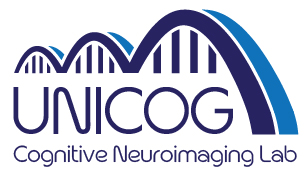Applications are invited for a doctoral position supervised by Ghislaine Dehaene-Lambertz to study syntactic abilities in 5-8-year-old children and the influence of reading on the development of these abilities using behavioral paradigms and magnetic resonance imaging (functional and structural MRI).
Although language acquisition starts from the first days of life on, syntactic abilities are developing until late childhood. In particular the comprehension of sentences in which the object crosses the subject, such as in object-Wh question and in embedded object relatives (‘‘The cow that pushed the zebra patted the sheep.’’), massively improves between 5 and 6 years of age. At the same age, children are learning to read and are progressively exposed through written texts to more complex lexicon and sentences that they should understand without the prosodic and social cues that accompanie oral exchanges. Reading also improves verbal short-term memory, metaphonology and in general attention to the elementary components of speech. Finally, teachers explicitly attract children’ attention to the syntactic properties of speech as reading in French is dependent on syntactic knowledge. For example, the ending “ent” is pronounced at the end of an adverb (“largement”) but not at the end of the verb plural form (“ils aiment”). Therefore reading acquisition might not only improve the phonological representations, a phenomenon commonly studied in the literature, but also syntactic computations. Previous MRI experiments have indeed shown an increase of activation in the planum temporale related to reading performance independently of age but also a fastest BOLD response in function of age/reading along the different linguistic nodes of the superior temporal sulcus (Monzalvo et al, 2012-2013). The goal of the thesis is thus to document the improvement in syntactic processing, indexed by an improvement in the comprehension of embedded relatives and Wh questions, and its relation with the maturation of brain structures such as the left inferior frontal region and the arcuate fasciculus, as the influence of reading on the oral language network. The tested population will be 5-6-year-old children in the last year of kindergarden (grande section) and the first year of school (CP). The lag between the academic year and the civil year allows to have groups of approximately the same age but with different academic enrolment with a follow-up along the two following years. Single-case and group studies of children with specific language impairment will also be included in collaboration with N. Friedman (University of Tel Aviv) and Hervé Glasel (Ecoles Cerene, Paris). Applicants will organize the recruitment and testing and thus should like to interact with young children, their parents and teachers. They will design the experiments and analyze the behavioral and MRI data and thus program in R, Matlab and/or Python. They can learn these skills in the lab but should not be shy with computers!
The position is in the developmental neuroimaging lab which is part of INSERM ‘Cognitive Neuroimaging Unit’ (http://www.unicog.org, director : Stanislas Dehaene) at NeuroSpin (http://www-dsv.cea.fr/en/institutes/institute-of-biomedical-imaging-i2bm/departments/neurospin-neurospin) in the greater Paris region (plateau de Saclay). NeuroSpin is a brain imaging center that houses several research labs and combines expertise in cognitive neuroscience and neuropsychology, magneto-electrophysiology, high field MR imaging and imaging data analysis. The center has child dedicated rooms and equipment.
Applications will be considered until the position is filled starting October 2017. For best consideration, please electronically submit a CV with a description of education, research experience and computer expertise, and two references to ghislaine.dehaene@cea.fr
Web site: www.unicog.org and https://moncerveaualecole.com/

